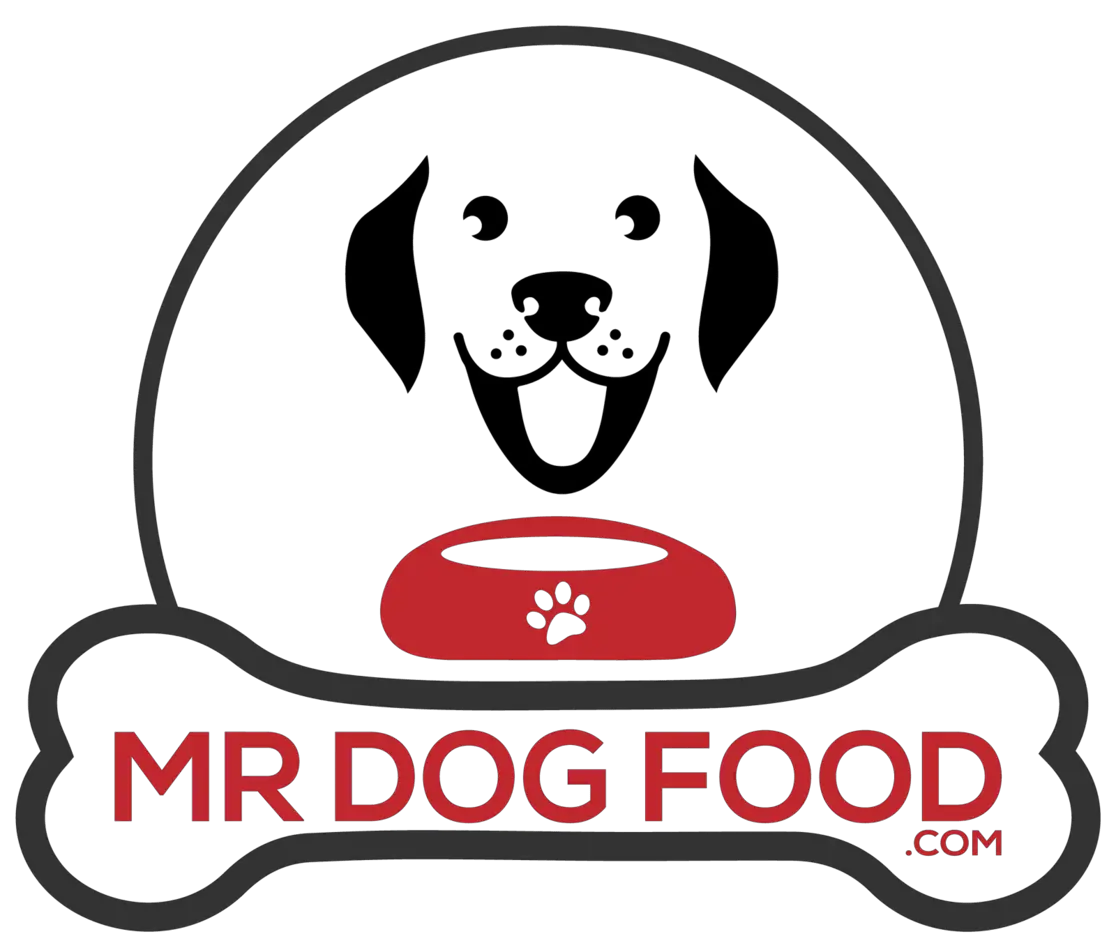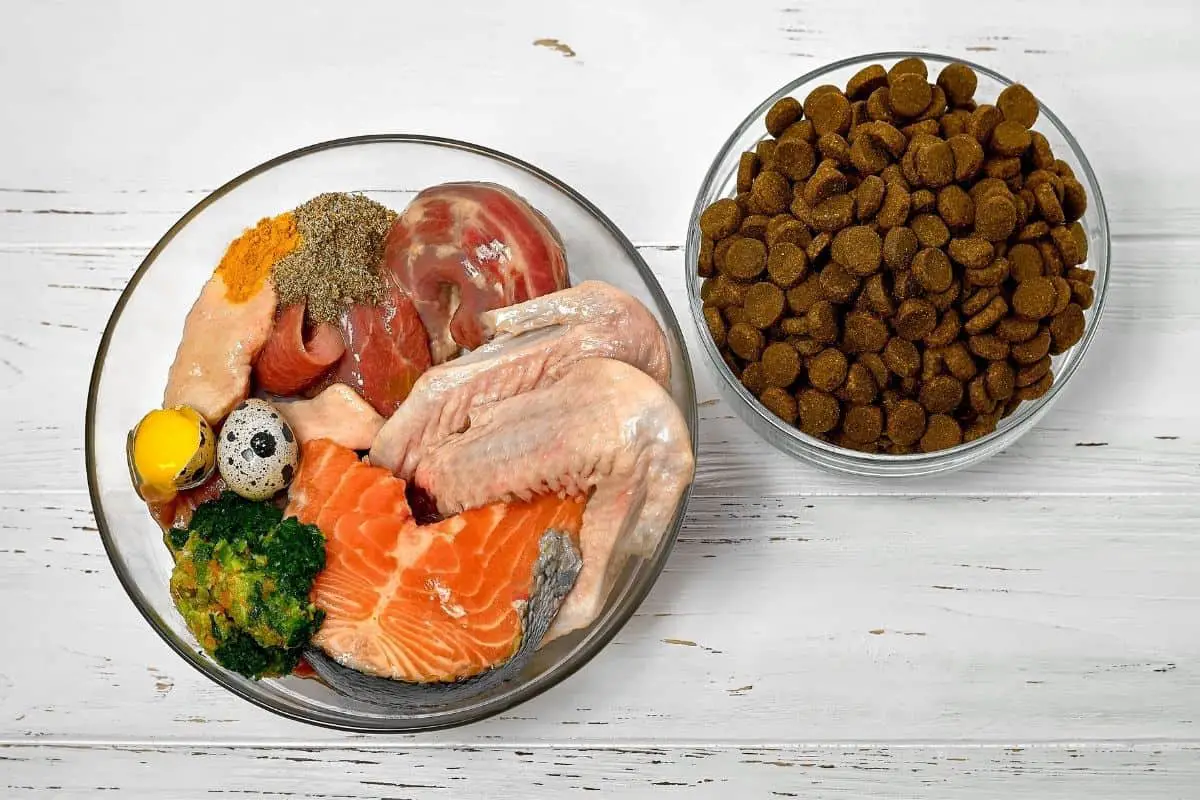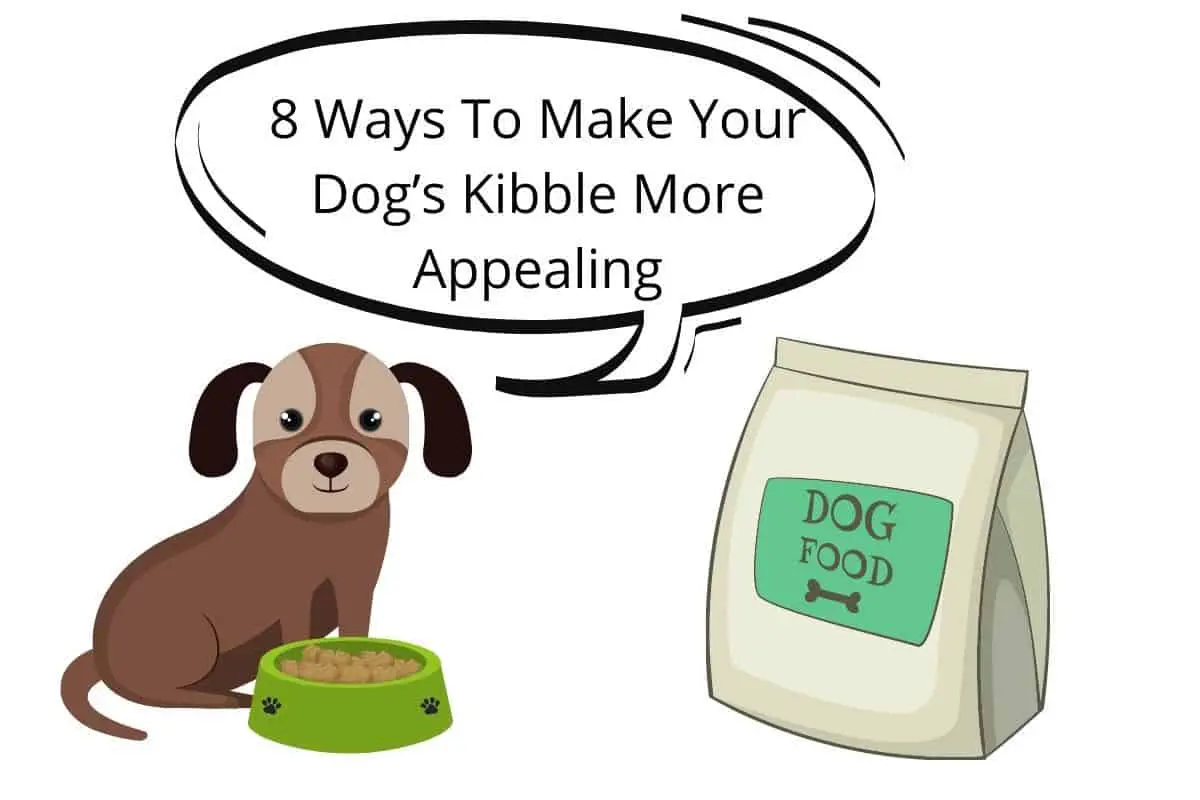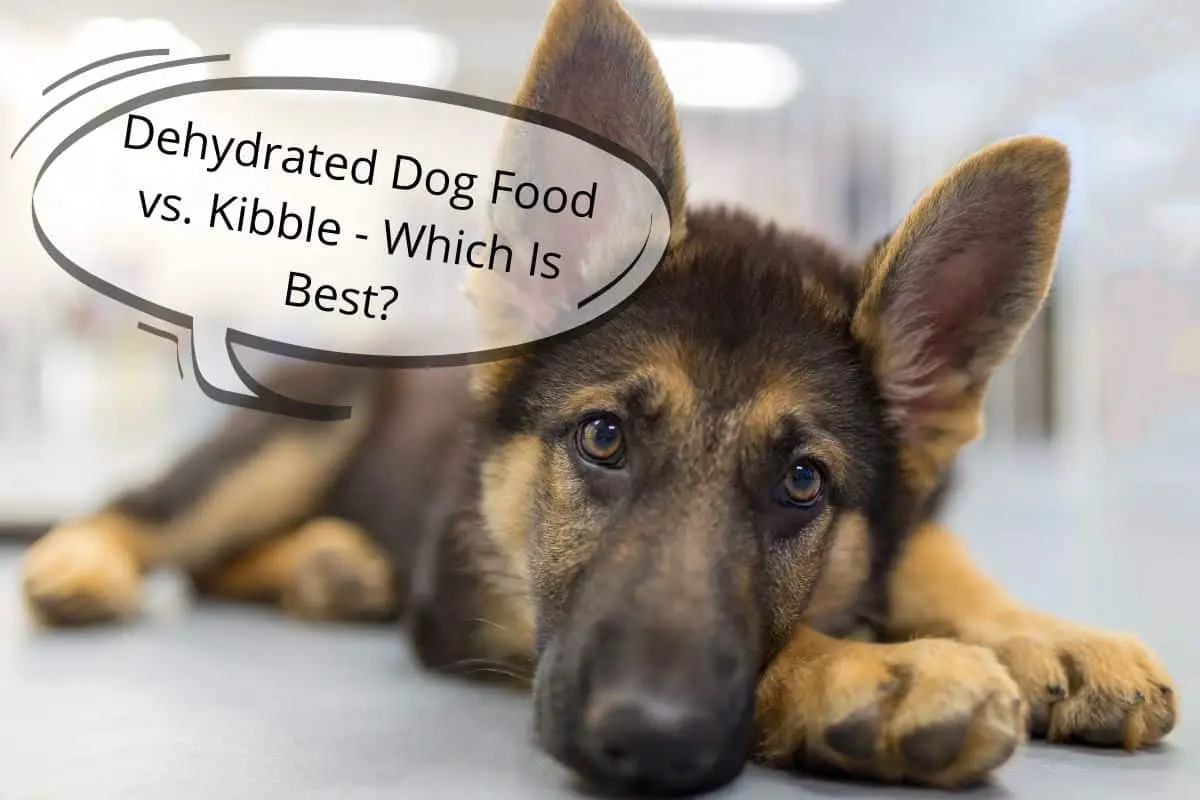This post contains affiliate links.
There are endless debates among dog owners on how to care for and raise healthy dogs. One of the areas where dog owners differ is on the best type of food for dogs. This is in terms of whether to feed homemade dog food or kibble.
As the name suggests, homemade dog food is a type of dog feed made at home. On the other hand, kibble is dog feed that is readily available in supermarkets and pet stores. These dog feeds have other differences, such as their ingredients and their nutrition value on the dog.
Diet and nutrition play a vital role in the health and overall wellbeing of your dog. With this in mind, as a responsible dog owner, you need to get the diet that will have maximum benefits on your canine friend. Read below to understand both homemade dog food and kibble in a better light and know which among them is the best to feed your dog.
Table of Contents
Homemade Dog Food
As mentioned above, homemade dog food is a dog meal that is made at home. This meal can either be raw or cooked. Most dog owners have turned to this dog feeding method after being discouraged by low-quality commercial dog feeds.
Additionally, it is exciting to feed your dog homemade dog feed since you have total control over what your dog eats. Nevertheless, preparing homemade dog food is not a walk in the park. This is because you need to know the best nutrients to add to the food, not to mention it is time-consuming.
Overview of Preparing Homemade Dog Feed
You need to follow some basics to ensure that you do not deprive your dog of any nutrients when preparing his food at home. These basics include:
- Use supplements, such as calcium, on the homemade diet if you do not feed raw bones.
- Use foods from different food groups to ensure that your dog gets all the necessary nutrients.
- For poultry feeds, always ensure that you remove the skin before feeding the dog. Additionally, for other types of meat, stick to lean meat.
- Discuss with your veterinarian and get approval of the feeds your dog should get. This will help ensure that your dog receives a balanced and complete diet. Your vet will also help you identify some of the ingredients to avoid those that your dog may be allergic to.
Guidelines to Creating a Balanced and Complete Diet for Your Dog
The ideal type of homemade dog food should be balanced and full of nutrients. Since your dog’s health depends on what you feed him, pay close attention to this. Whether raw or cooked, ensure that about 80% of the food you feed your dog is balanced.
To ensure that your homemade dog food is balanced, include the following ingredients.
Animal Products, Such As Meat
Meat and other animal products should constitute at least half of the food that you feed your dog. However, ensure that this meat has a low-fat content. Excess fat could lead to obesity, among other health problems of being overweight. Therefore, use lean meat or eliminate separable fat from the meat that you feed them.
Fish
Fish is a good ingredient for dog food since it is a great source of vitamin D. Fish types such as pink salmon and jack mackerel are ideal types of fish for your dog. Ensure that you eliminate all bones from the fish before feeding them. You can include small amounts of fish in the food every day or large amounts of fish several times a week.
Raw Meaty Bones
Raw meaty bones are optional feeds since you can use calcium supplements in their place. However, if you opt to feed them, ensure that they make up about 1/3 of the overall diet. Additionally, ensure that you always feed raw bones and avoid cooked bones.
Organs
Various body organs make up a good constituent of homemade dog food. For instance, beef liver is a nutritious organ that you should include in your dog feed every other day. Other organs that dogs can eat include lungs, kidneys, and hearts.
Fruits and Vegetables
Although dogs mainly eat meat, fruits and vegetables should also be part of their meal. The fruits and vegetables have benefits, such as improving the dog’s digestive health. Additionally, they serve as antioxidants.
Therefore, ensure that they are a part of the dog food that you prepare. Go for the deeply colored fruits and vegetables since these are the most nutritious. Moreover, identify the fruits and vegetables that are not good for dogs and avoid them.
Supplements To Add in Homemade Dog Food
In addition to the natural foods that you give your dog, there are other minerals, supplements, and vitamins that you need to add to the food. You may also need these supplements if the food you fed your dog was not balanced. They include.
Oils
Oils have numerous benefits in the dog’s body. For this reason, it is an important ingredient to include in your homemade dog food. However, you need to ensure that the oil you feed your dog is the right amount and type.
Among the oils that you should feed your dog is fish oil, as it contains nutrients that help reduce inflammation and boost the dog’s immune system. Give this oil on the days when you do not include fish meat in the diet.
The other type of oil that you can add to your dog’s meal is Cod Liver Oil. This oil is also recommendable when you do not include a lot of fish in the diet. And it also helps provide vitamin A and D. Additionally; you can mix it with regular fish oil to increase the amount of EPA and DHA.
Vitamins and Minerals
Similar to human beings, dogs require vitamins and minerals for them to be healthy. As much as they may acquire the nutrients from the foods that you feed them, you may need to supplement these vitamins and minerals.
Among the paramount minerals to include in your dog’s food is iodine. However, avoid overdoing the iodine so as not to suppress thyroid function. Consult with animal experts to know how much iodine your dog needs to avoid making any costly mistakes.
Another essential supplement is vitamin E. This supplement is most important if you are using oil supplements. However, avoid using too much vitamin E since it may cause counter-productivity.
Green blends are also ideal supplements in dog food. These supplements are essential if you do not have a lot of vegetables in your dog food. The green blends also contain calcium supplements. Therefore, reduce other calcium supplements when using green blends.
Myths and Misconceptions About Homemade Dog Food
Human Nutrition Books Will Help in Preparing Your Dog’s Food
Sure, your dog eats whatever you give it, even if you had prepared the meal for yourself. However, this does not give you the green light to use a cooking guide for humans to prepare dog food.
Some of the things that humans eat are not fit for dog consumption. Therefore, if you are unsure of what to prepare for your dog, consult with your vet instead of the cooking book you use in your kitchen.
Dogs Do Not Require Carbs
You may have heard that dogs can get enough glucose from the proteins and fat that they eat. However, it is unwise to eliminate carbs from your homemade dog food. These carbs help ensure that the dog’s gastrointestinal system functions properly. Therefore, include some carb sources, such as brown rice, legumes, or starchy vegetables.
Dogs Can Eat All Foods Raw
Preparing a dog’s food is tiring and time-consuming. For this reason, you may give up the process and feed the raw dog food. However, before you go for the raw option, find some of the foods dogs eat raw. Additionally, find out the pros and cons of raw food and weigh whether this kind of food is worth feeding your dog.
All Dogs Can Eat a Similar Diet
Like people, all dogs are different. This means that what your friend’s dog eats may not be good for your dog. Therefore, when trying out homemade dog food, first figure out the type of food good for your dog.
Find out whether there are any foods that your dog is allergic to and avoid them. Additionally, dogs’ feeding requirements differ based on their age. Find out what your dog needs based on his age, and ensure that you are feeding him.
Advantages of Homemade Dog Food
Some of the advantages of preparing your dog’s food include:
- Homemade dog food puts you in control. This means that whatever your dog eats is up to you.
- Dogs enjoy the taste of homemade food more than commercial food.
- Homemade dog food has helped improve dog’s health.
- You have a wider variety of healthy foods and supplements that you will feed your dog.
- The homemade dog food has little or no processing chemicals.
Disadvantages of Homemade Dog Food
- It is time-consuming to prepare the meal for your dog. It will require almost as much time as you spend to prepare your family’s meals.
- It requires a lot to make it balanced and complete.
- Your dog may miss essential nutrients if you fail to include them in his diet and supplements.
- Buying the ingredients for homemade dog food may end up more expensive than buying ready-made foods.
Kibble
Kibble, which is also known as dry food, is the commercially prepared dog food that you purchase in the pet store. It is a mixture of grains, meat, sources, vegetables, vitamins, minerals, and fruits.
For this reason, it is safe to say that the manufacturers of these meals include all the necessary products to ensure that the food is balanced and complete for dogs. If your schedule is too tight to allow you to prepare dog food, this is the easiest way to go. When you get quality kibble, you are assured that your dog gets all the nutrients they need for proper and healthy growth.
Mistakes To Avoid When Buying Kibble
With kibble, you have no control over the ingredients that your dog eats. For this reason, the mistake of picking the wrong food will result in innumerable health problems for your dog. Some of these mistakes to look out for include.
Buying the First Kibble That You Come Across
When looking for the best dog food in the market, there is a lot that you need to consider. For instance, you need to consider the ingredients of the kibble. Check whether there is anything that your dog is allergic to. Additionally, confirm whether the food contains all necessary ingredients for dogs.
On the other hand, you need to confirm the ‘best by’ date of the food. The ideal food to go for is one whose best by date is many months away. Therefore, do not buy the first kibble you come across without first confirming such crucial details.
Buying Too Much Food
Sure, it’s tempting to buy food that your dog will eat for some time instead of going to the pet store from time to time. However, as convenient as this may seem, it may end up causing more harm than good.
This is because when the food is exposed to oxygen for a long time, it oxidizes, which may have health risks for your dog. Therefore, when buying dog food, buy food that your dog will eat for at most three weeks to ensure that the food remains fresh.
Storing the Food at the Wrong Place
All food storage instructions say that you should store the food in a cool and dry place. When storing the kibble, follow these instructions to the latter. This will help preserve the food for a long time and avoid oxidation.
Avoid such mistakes when using kibble to avoid issues that could cause life-threatening symptoms or even death of your dog.
Advantages of Kibble
- There is no effort or time needed to prepare the food.
- There is guaranteed nutritional completeness.
- Kibble has many added vitamins.
- You can feed the dog kibble for a long time, unlike homemade dog food, which does not last long.
- It is cost-effective.
- It is available in many flavors, and you only need to choose that which fits you the best.
Disadvantages of Kibble
- Some products may be low quality and bad for your dog.
- It is hard to tell between quality and non-quality kibble.
- Kibble may have preservatives and chemicals that may negatively affect the dog.
- Kibble has a high carb content.
- You have no control over the nutrients that your dog eats when using kibble.
Should You Use Homemade Dog Food or Kibble for Your Dog?
From the information above, both kibble and homemade dog food have their advantages and disadvantages on dogs. However, there are several factors to consider to help you settle for either kibble or a homemade diet.
For instance, if you have a tight schedule with limited time to spend away from your job, you can go for kibble. It will save you the time and energy that you spend preparing the food.
On the other hand, if your dog is allergic to several food products and ingredients, you should prepare his food. This way, you will eliminate the ingredients he is allergic to in the homemade diet. Additionally, if you want to be in charge of everything your dog eats, the homemade food option is the best way to go.
Factors To Consider When Choosing Dog Food
As mentioned earlier, not all dog food is good for all dogs. Here are some of the factors that could help you choose the best food for your dog:
- The dog’s age and size. Have an idea of the dog’s age in mind when feeding him. Additionally, large breeds and small breed dogs have different nutrition requirements.
- Activity level. Less active dogs require fewer carbs in their diet than the more active dogs.
- Health. To help maintain good health, always ensure that your dog’s food is balanced and complete. In case your dog has any underlying health condition, know the foods to avoid to prevent the condition from deteriorating.
- Your lifestyle. If you have enough time to cook for your dog, it is best to stick to homemade diets. Otherwise, go for a kibble diet since it is less time-consuming to prepare.
- Taste. Your dog deserves the best-tasting food. Therefore, when choosing the food to give your dog, go for that with the best taste.
Conclusion
Since dogs don’t get to choose what they eat, this responsibility is totally on your hands as the dog owner. One of the major decisions you have to make when coming up with this decision is whether to go for kibble or homemade food. Use the information above and consult with your veterinarian to develop the type of food that will keep your puppy happy and healthy.
Sources
- Toronto Dog Walking: Dog Food: Kibble Vs. Raw Vs. Homemade Diets – What’s Best for Your Dog?
- American Kennel Club: Fresh vs. Raw vs. Kibble: What Should You Feed Your Dog?
- The Bark: 10 Myths and Misperceptions About Homemade Dog Food
- Whole-Dog-Journal: Which Type of Dog Food is Best?
- Whole-Dog-Journal: How to Make Homemade Dog Food
- Spot Petins: Is Fresh Dog Food Worth the Hype?
- Earth rated: What should you feed your dog? Raw vs. Kibble
- Pets Amerikanki: 10 Things to Consider When Choosing Dog Food
- Homes Alive: Choosing Dog Food: What Does My Dog Need?
Mrdogfood.com is a participant in the Amazon Services LLC Associates Program, an affiliate advertising program designed to provide a means for sites to earn advertising fees by advertising and linking to Amazon.com. We also participate in other affiliate programs which compensate us for referring traffic.




